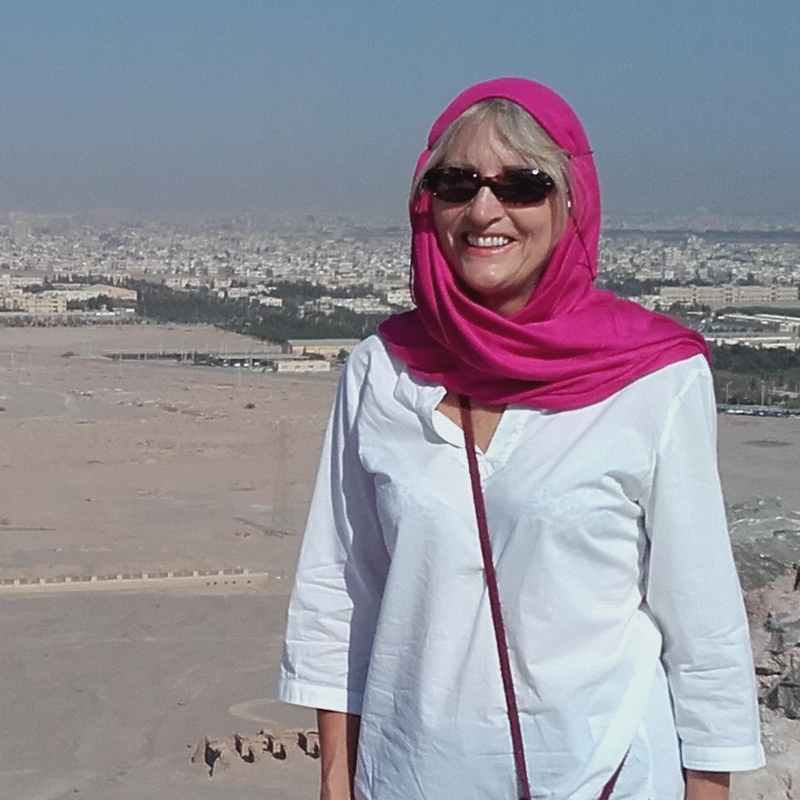
Day 1 : Arrival
Arrive into Yerevan where you will be met by a Travel The Unknown representative and transferred to your hotel. Overnight in Yerevan.
Overnight in Republica Hotel Yerevan, Yerevan
Meal plan: n/a
Discover the rich history of Armenia and Georgia as you journey across the stunning landscapes of these two fascinating countries, exploring the abundance of medieval fortresses and spectacular churches and monasteries. Experience Armenia’s warm hospitality as you begin your tour in the capital of Yerevan before visiting UNESCO-listed sites, from Etchmiadzin Cathedral to Zvartnotz Temple. Uncover Armenia's traditions as you learn how to make authentic Armenian dishes and sample award-winning brandy in Ararat Brandy Factory. Continue to the wonderful rock formations at Garni and observe the beautiful views from Sevanavank Monastery over Lake Sevan before crossing over into Georgia. Wander the narrow streets of Tbilisi’s Old Town, visit a traditional Georgian wine cellar in Kakheti and taste “Kakhetian” wines at Kindzmarauli Wine Factory. Explore the magnificent Svetitskhoveli Cathedral and the ancient cave towns of Uplistikhe and Vardzia before learning about Georgia’s Soviet history in Gori's Stalin Museum. Finally, travel up to the stunning Caucasus Mountains and marvel at the spectacular natural beauty this wonderful region has to offer.
Yerevan - Garni - Tbilisi - Lake Sevan - Sighnaghi - Velistsikhe - Kvareli - Mtskheta - Uplistsikhe - Borjomi - Gori - Vardzia - Rabati Castle - Kazbegi

Arrive into Yerevan where you will be met by a Travel The Unknown representative and transferred to your hotel. Overnight in Yerevan.
Overnight in Republica Hotel Yerevan, Yerevan
Meal plan: n/a
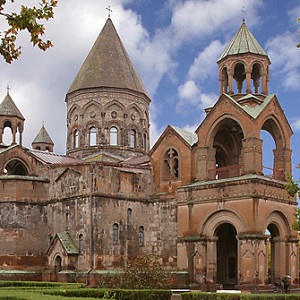
Enjoy a morning tour of Yerevan, including visits to the Republic Square, the Opera House and the Cascade Complex. Continue to the Armenian Genocide Memorial Museum before visiting the History Museum of Armenia. A homemade lunch will be served in a local Art School where you can observe the children's artwork in the art salons. Later, take part in a cooking class and learn how to make the Armenian traditional dish “Dolma”. Drive to the Armavir region to visit the UNESCO-listed Etchmiadzin Cathedral, St. Hripsime Church and Zvartnotz Temple. Return to Yerevan, stopping at Maran Winery on the way. Overnight in Yerevan.
Overnight in Republica Hotel Yerevan, Yerevan
Meal plan: Breakfast & lunch
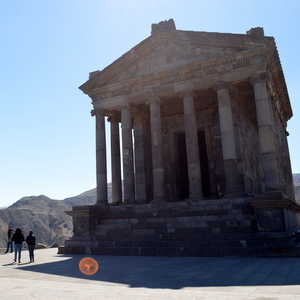
In the morning, visit the house-museum of Armenian filmmaker Sergey Parajanov, famous for his extraordinary art and collages. Continue to the pagan Temple of Garni and observe the wonderful rock formations in Garni Canyon along the Azat River. After a short walk (1 - 1.5 hours) in the river valley, reach the portion of Garni Gorge commonly known as the "Symphony of Stones". Enjoy lunch at a local house with a baking demonstration on how to make Armenian flatbread “lavash” in an underground stove called a ‘tonir’. Later, travel northeast of Garni to the magnificent Geghard Monastery before returning to Yerevan for your overnight stay.
Overnight in Republica Hotel Yerevan, Yerevan
Meal plan: Breakfast & lunch
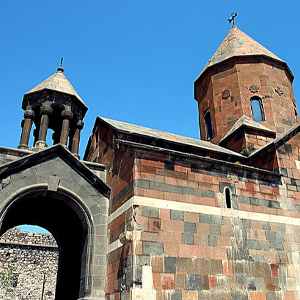
After breakfast, visit the Megerian Carpets Company, a showroom and factory of handmade Armenian rugs. Enjoy a unique experience watching and even participating in the carpet making process, learning about the different colours and designs of the rugs. After, drive to the Aragatsotn region to visit the Armenian Alphabet Monument, where giant stone letters are dedicated to the founder of Armenia's alphabet, M. Mashtots. Continue to Ararat region and stop at Khor Virap Monastery, the closest point to Mt. Ararat. Return to Yerevan, visiting the local craftshop of a "Duduk" maker en route (Duduk is a traditional Armenian instrument made of apricot wood). Lunch will be served at a local house or restaurant. The afternoon is free at your leisure. In the evening, enjoy dinner in a traditional Armenian restaurant with live folk music. Overnight in Yerevan.
Overnight in Republica Hotel Yerevan, Yerevan
Meal plan: Breakfast, lunch & dinner
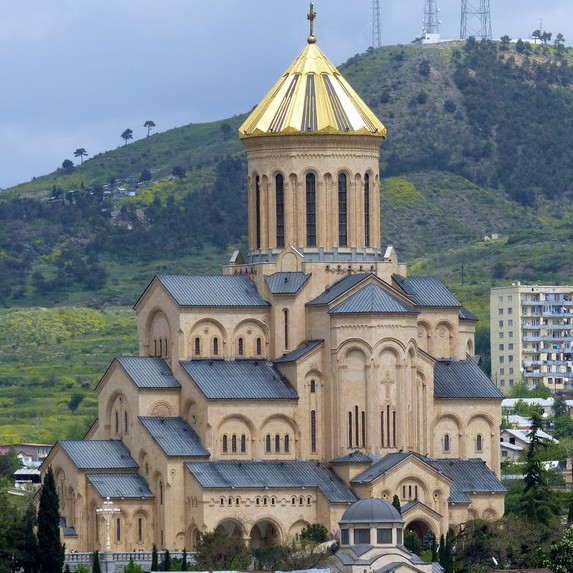
In the morning, depart for Lake Sevan. Climb up Sevan Peninsula and see Sevanavank Monastery before proceeding to Dilijan town. Continue to Fioletovo village mainly inhabited by local "molokans" (translated as “milk drinkers”). Enjoy some sweets and tea or coffee with your host and get an insight into the lives of this unique spiritual sect. After, drive to Lori region to visit the UNESCO-listed Haghpat Monastery. Transfer to the Armenian-Georgian border Sadakhlo where you will change transportation and guide, and after some border formalities continue to Tbilisi in Georgia. In the evening, have dinner in a local restaurant. Overnight in Tbilisi.
Overnight in Iota Hotel, Tbilisi
Meal plan: Breakfast & dinner
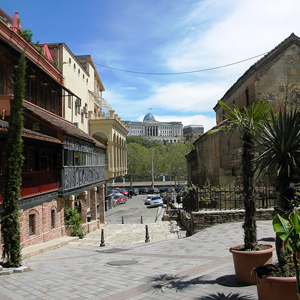
After breakfast, enjoy a sightseeing tour around Tbilisi. Explore Tbilisi's Old Town, walking down the narrow streets of the city and observing the religious and secular architecture. Take a cable car ride (if available) to Narikala Fortress and then walk downwards to the sulfur baths. During the tour, you can enjoy superb panoramic views over the Old Town. Afterwards, visit the stunning treasury of the Georgian History Museum (closed on Mondays) before taking a stroll along Rustaveli Avenue – the main street in Tbilisi. Dinner is at a local restaurant with a folklore dance show. Overnight in Tbilisi.
Overnight in Iota Hotel, Tbilisi
Meal plan: Breakfast & dinner
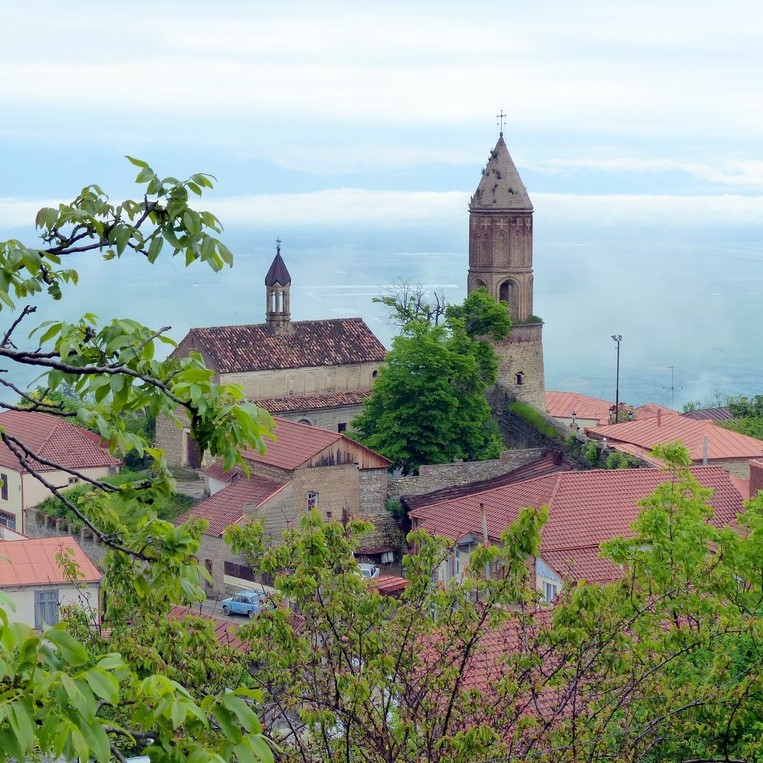
Travel to the Kakheti region, famous for its wine production and welcoming hospitality. Visit the 9th century Bodbe nunnery where St. Nino, the woman from Cappadocia who brought Christianity to Georgia in the 4th century, is buried. Continue to the 18th century town of Sighnaghi, where there are picturesque views of Alazani valley and the Caucasus mountains. Later, visit a traditional Georgian wine cellar and taste wine made in a "Kvevri" (clay vessel), a method of wine making included in the UNESCO heritage list. Enjoy a homemade lunch with a local family and explore their gardens and vineyards. Afterwards, visit Kindzmarauli Wine Factory and try different kinds of famous manufactured "Kakhetian" wines. Return to Tbilisi for your overnight stay.
Overnight in Iota Hotel, Tbilisi
Meal plan: Breakfast & lunch
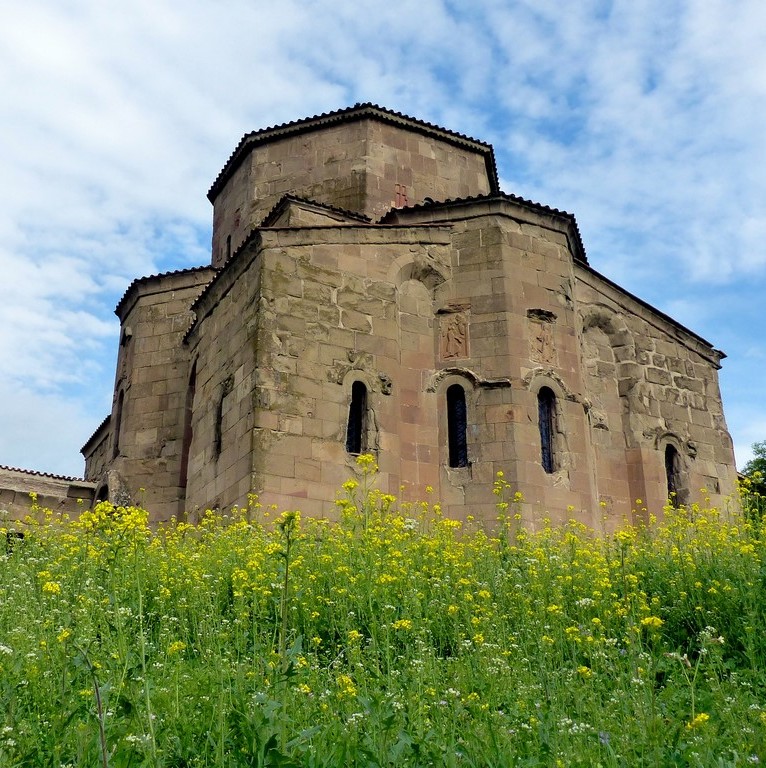
Drive to the ancient capital and religious centre of Georgia, Mtskheta, and explore the UNESCO-listed 6th century Jvari Church and 11th century Svetitskhoveli Cathedral where the Robe of Christ is buried. Continue to the town of Gori and explore Uplistsikhe Cave Town. Afterwards, proceed to mineral water town Borjomi for your overnight stay.
Overnight in Borjomi Likani Health & Spa Centre, Borjomi
Meal plan: Breakfast & dinner
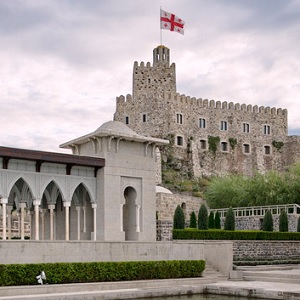
In the morning, travel to the magnificent 12th century cave town of Vardzia. Stop at Khertvisi fortress, stretching out along the river Mtkvari. Explore the complex and amazing 12th century frescos in the rock-hewn church. Close to Vardzia, taste the local yogurt "Matsoni". On the way back to Borjomi, visit Rabat Citadel (closed on Mondays) in Akhaltsikhe. Overnight in Borjomi.
Overnight in Borjomi Likani Health & Spa Centre, Borjomi
Meal plan: Breakfast & dinner
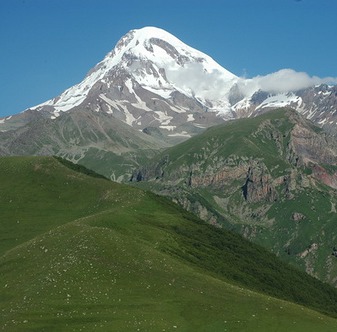
In the morning, drive to the magnificent Great Caucasus Mountains, stopping at the Stalin Museum en route. Continue to Ananuri fort with two churches overlooking Jinvali water reservoir. Arrive in Stepantsminda (also known as Kazbegi) over the Cross Pass. Overnight in Stepantsminda.
Overnight in Hotel Porta Caucasia, Kazbegi
Meal plan: Breakfast & dinner
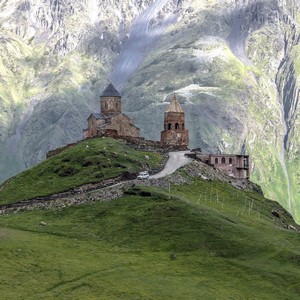
Enjoy a 3 hour trek through beautiful valleys and woodlands to and from the Gergeti Trinity Church. Weather permitting, you may catch a glimpse of one of the highest glaciers in the Caucasus - Mt. Kazbegi (5047m). Return to Stepantsminda and visit a local master making “Teka” artifacts. Have lunch with a local family and take part in a cooking class, learning how to make the Georgian dish "Khinkali". Transfer to Tbilisi for your overnight stay.
Overnight in Iota Hotel, Tbilisi
Meal plan: Breakfast & lunch

Transfer to the airport at the appropriate time for your international flight home.
Meal plan: Breakfast
All accommodation subject to availability. Final accommodation choices will be confirmed after booking.

Located in the centre of Yerevan, close to all the main touristic attractions, Republica Hotel Yerevan offers an express laundry and dry cleaning service, in-room-dining, in-room massage services and the possibility of renting bicycles. It also has 2 restaurants, one offering high quality traditional Armenian food and the other one serving Italian food.
The rooms feature free Wi-Fi, air conditioning, a fridge and flat-screen TV with satellite channels. The bathrooms include a hairdryer, bathrobes and slippers.

Located just 350 yards from Freedom Square, the modern, stylish Iota Hotel Tbilisi offers 90 air-conditioned rooms and free Wi-Fi throughout the property. There is a restaurant on the top floor with views over the city and an attractive garden in which to relax. All rooms come with a flat-screen TV, safety box, minibar and a private bathroom, and upper room categories feature a seating area, terrace and/or balcony. For your comfort, bathrobes, slippers and free toiletries are provided, and there is a 24-hour front desk where the friendly staff will be happy to help.

Located just 400 yards away from the Kura River, Borjomi Likani Health & Spa Centre offers a luxurious experience in an area of Georgia known for the healing properties of its mineral waters since the time of the Tsars. The hotel is set in a pre-alpine area, offering visitors tranquility with views that can be admired from one of its common areas or restaurants. Facilities include a bar, concierge service, bicycle rental, 24-hour front desk and luggage storage. Tennis, squash, billiards and horse riding can be enjoyed on-site or in the surrounding area.

Porta Caucasia Kazbegi is located in Kazbegi, 24.1 km from Gudauri and 40.2 km from Vladikavkaz. The hotel has a beautiful terrace and views of the surrounding mountains, and guests can enjoy a drink at the bar. All rooms include a flat-screen TV with satellite channels, and some rooms feature a sitting area for your comfort. Bathrobes, slippers and complimentary toiletries are provided to enhance your stay. There is a 24-hour front desk, hairdresser's, and gift shop at the property.
Explore the rich and mystic religious culture of Armenia
Discover Armenia's abundant and varied bird species
A Taste of Armenia's rich culinary heritage
Learn about the unique ancient script of Armenia
Charms & contradictions of Azerbaijan, Georgia & Armenia
Journey through the rich history of Armenia & Georgia
Three small countries. All neighbours. All totally different.
Archaeology laid bare on Europe's balcony.
Ancient monasteries, traditional cuisine & stunning landscapes
Irwin Drangel & Linda Schain , Tailor-made Caucasus and Soviet FringesWe asked Travel the Unknown to come up with an unusual trip to 6 counties of the Caucasus and the ex-Soviet Union countries. They did so in a tour that flowed seamlessly the whole 38 days. The most impressive part was when Ukrainian Airlines cancelled our connecting flights from Kiev to Minsk, for 2 consecutive days. We contacted Travel The Unknown that morning and asked them to arrange an overnight train with a sleeping compartment. When arrived in Kiev, we were met at the airport, driven to the train station where tickets where waiting for us. They arranged for our pickup at the station in Minsk, as we left the train, and we went on our planned tours without losing a minute. That is what I call great service!
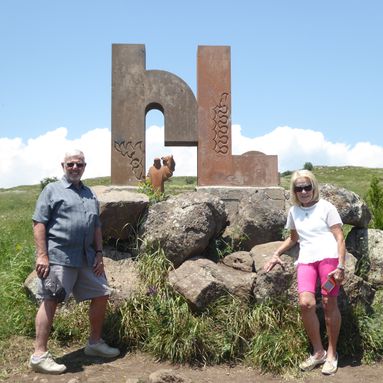
Pam Bowers & John Simpson , Best of the CaucasusWe had a fantastic time on our Best of the Caucasus tour. We loved eating with the families in Georgia and visiting the Molovan family in Armenia, definitely highlights of the trip. Our Georgian guide in particular was the best you could possibly have, giving a true insight into the country. He should be recommended for an award!
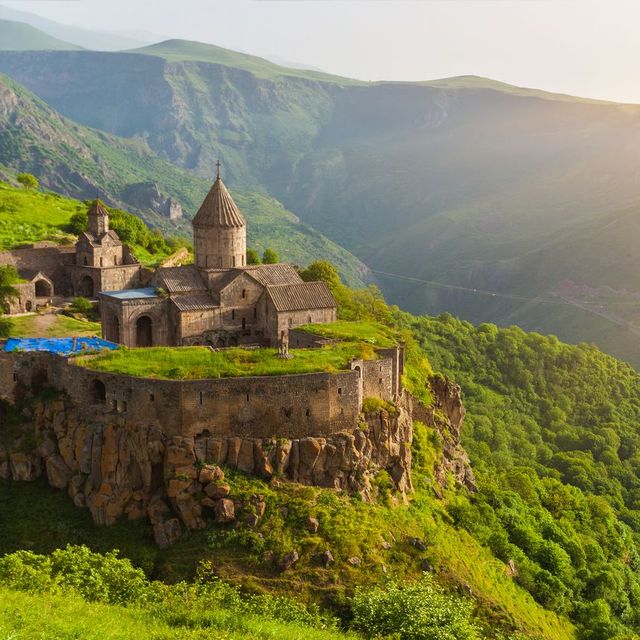
Margaret Small , Best of the CaucasusLoved the Caucasus with Travel the Unknown. I learnt of their ancient history and the current geopolitical significance of the cross roads between West and East. Another first class trip from Travel the Unknown with extremely knowledgeable guides and great hotels.
